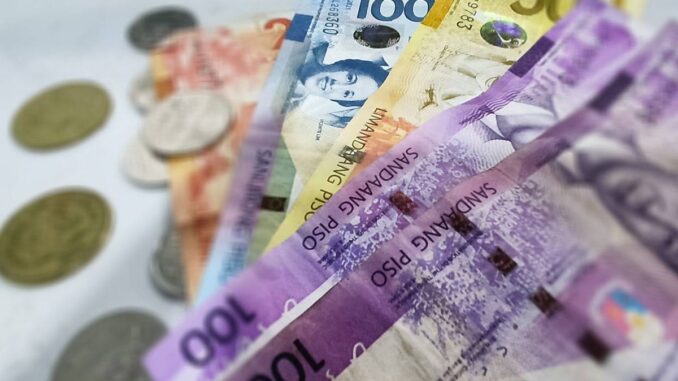
THE peso returned to an all-time low of P59 against the dollar on Thursday amid uncertainties over the pace of US Federal Reserve (Fed) rate cuts and mixed signals from local monetary authorities.
The currency weakened by 9 centavos to its lowest close in just over two years. It last hit P59:$1 on Oct. 17, 2022 — this close actually occurred four times that month — on concerns that the Bangko Sentral ng Pilipinas (BSP) had failed to keep up with aggressive Fed rate hikes to combat surging inflation.
It opened Thursday at P58.93:$1 and ranged from P58.92 to P59. Volume fell to P842 million from P1.094 billion on Wednesday.
The peso earlier this year fell back to the P58:$1 level after the BSP said that it could start cutting key interest rates ahead of the US central bank. Fears that local assets would become less attractive did not materialize, and the currency returned to P55:$1 territory by September.
The dollar, however, started strengthening on prospects that former US president Donald Trump was set to return to the White House and the peso again weakened, dropping back to P58:$1 in late October.
Trump, who has criticized the Fed’s policy moves and threatened to impose protectionist tariffs on all goods entering the US, won earlier this month, prompting further gains by the dollar.
Amid expectations that US policies will change, the US central bank has signaled that it would be taking a careful and patient approach. While it is still expected to cut anew next month, the odds for such have narrowed.
Locally, meanwhile, BSP Governor Eli Remolona Jr. has said that another rate cut — to follow 25-basis-point reductions in August and September — is likely to follow in December given weak economic growth.
A pause, however, is not off the table given inflationary pressures, Remolona also said, and the next rate cut could instead be deferred to next year.
The BSP’s policymaking Monetary Board will meet on Dec. 19, a day after the Fed’s Federal Open Market Committee holds its own policy discussion on Dec. 17 to 18.
A trader said the peso weakened further due to the stronger dollar and uncertainty of the Fed’s direction under Trump. Moreover, mixed signals from BSP could have also had an impact.
Another trader, meanwhile, said that “escalating tensions between Russia and Ukraine [are] exert[ing] increased safe-haven demand for the greenback.”
Jonathan Ravelas, senior adviser at professional services firm Reyes Tacandong & Co., said that the currency weakness reflected a rise in US treasury yields amid likely Trump 2.0 policies.
“This also reflects expectations of rate cuts by BSP, too,” he added.
Ravelas warned that the peso weakness could persist to 2025, with near-term risk of the exchange rate hitting P60:$1.
The peso’s decline, meanwhile, led to the stock market snapping a four-day rally. The benchmark Philippine Stock Exchange index shed 112.62 points, or 1.61 percent to end Thursday at 6,863.01.
The broader All Shares also fell, by 38.02 points or 0.99 percent, to 3,809.39.
Japhet Tantiangco, Philstocks Financial Inc. research manager, said investors had chosen to take profits and that the peso’s weakness also weighed on the bourse.
All sector indices except one closed in the red, with holding firms down the most by 2.83 percent. Services was the sole gainer, up 0.70 percent.
On a company basis, decliners outnumbered gainers, 111 to 86, while 57 were unchanged. WITH A REPORT FROM EARL JOHN ALFARO


Be the first to comment